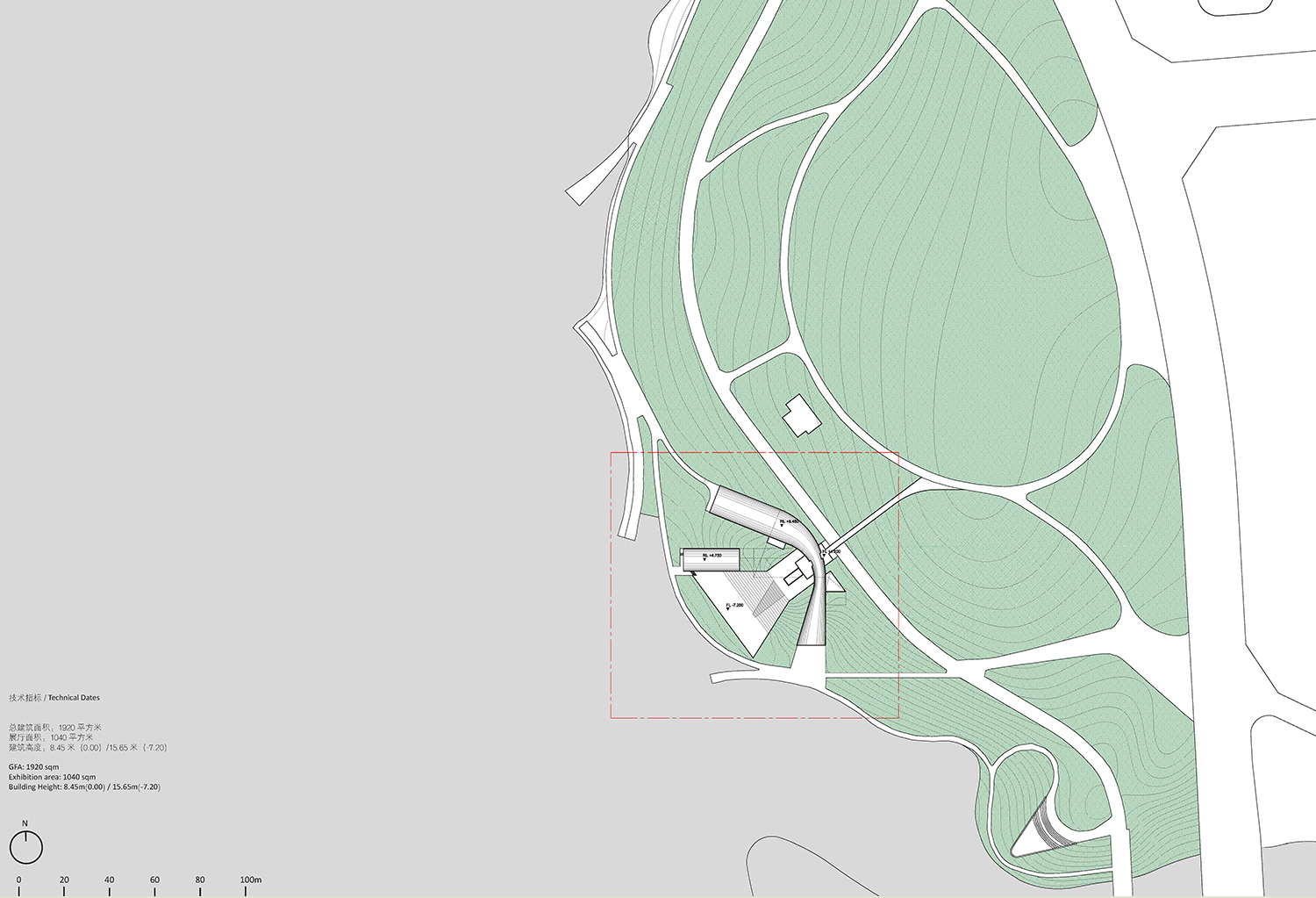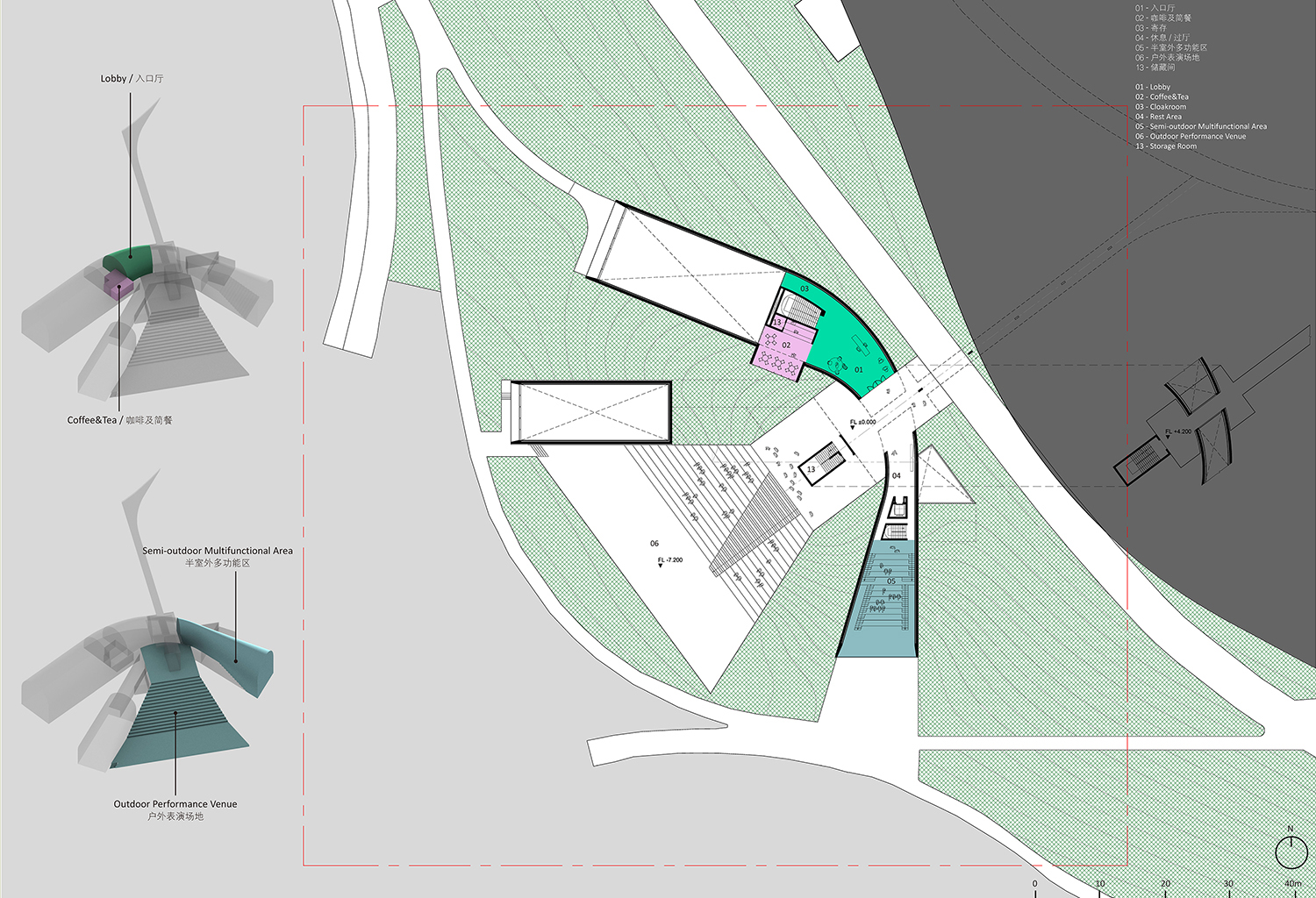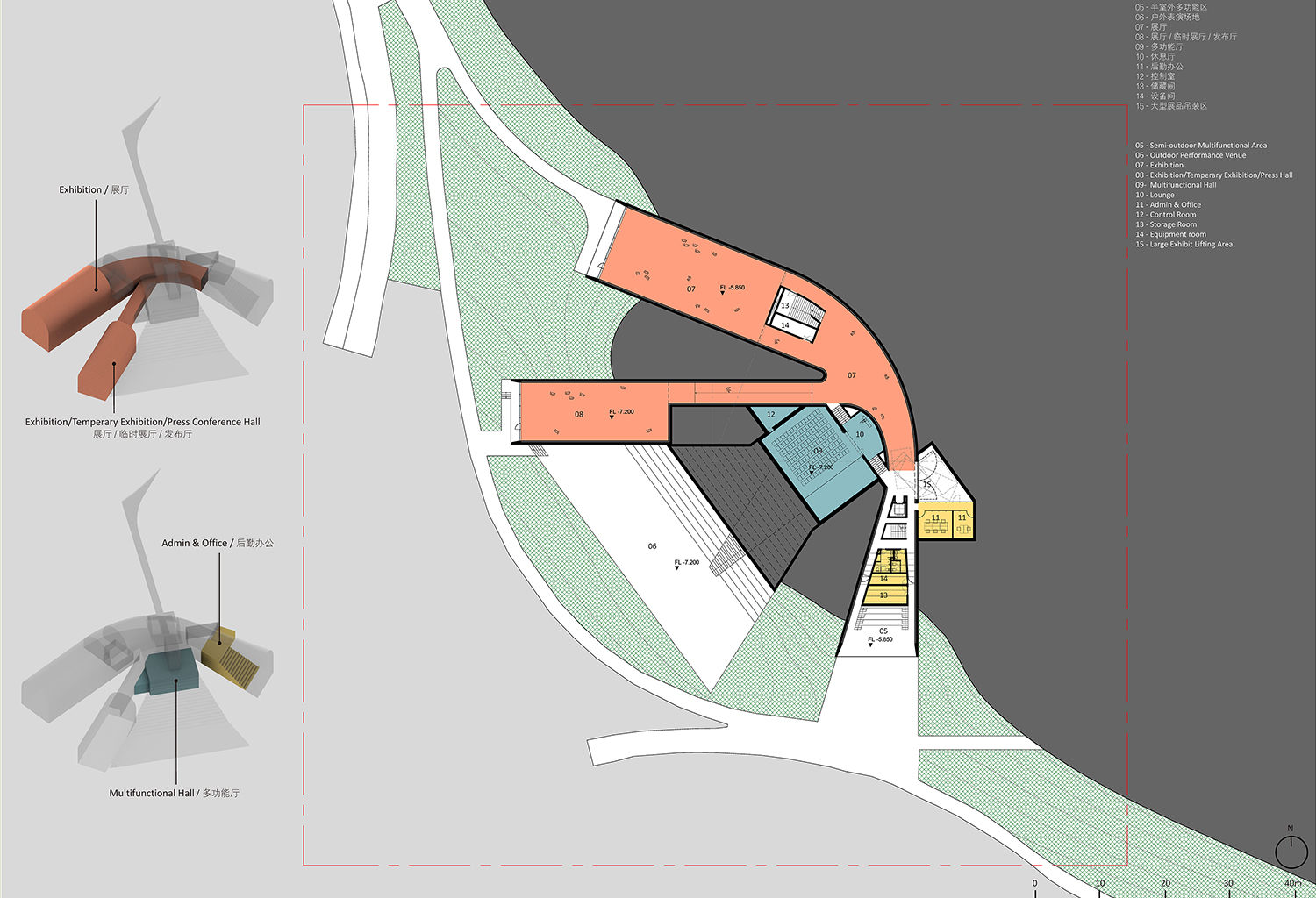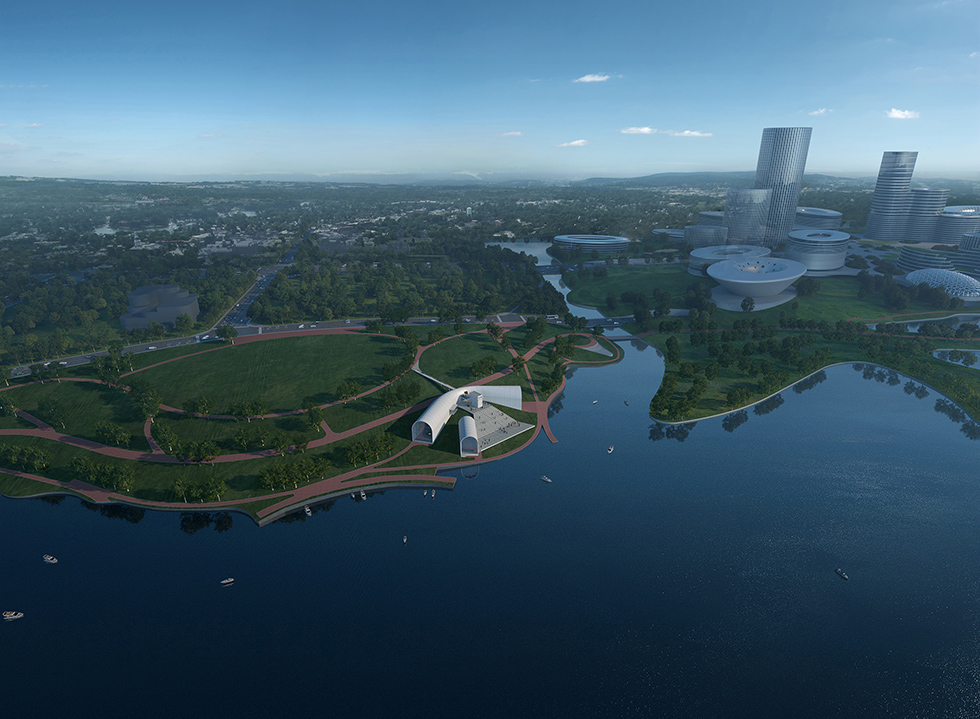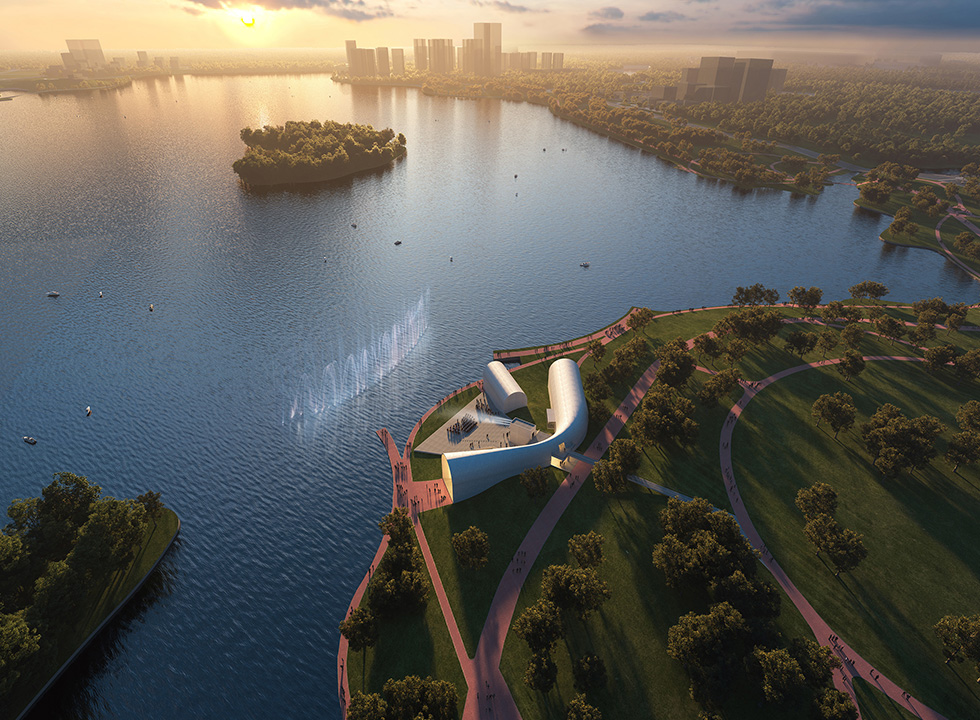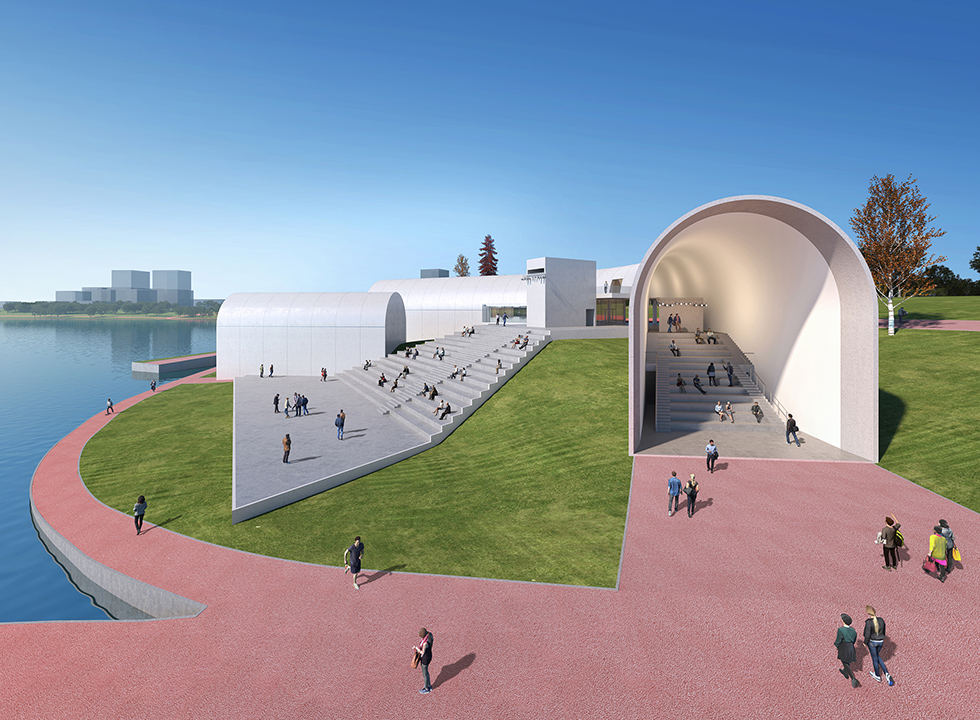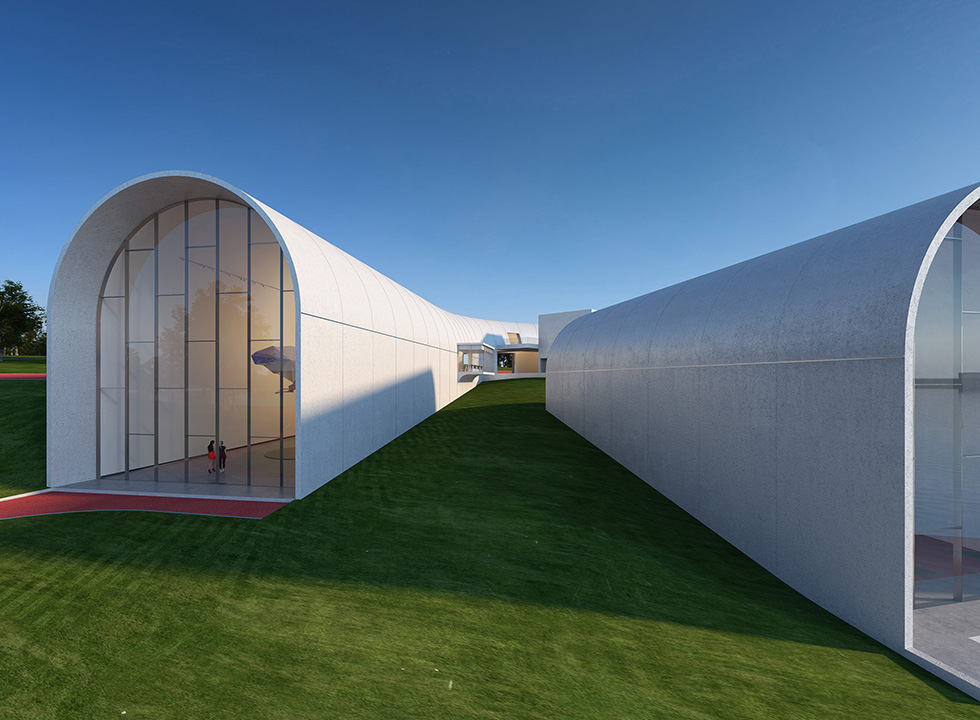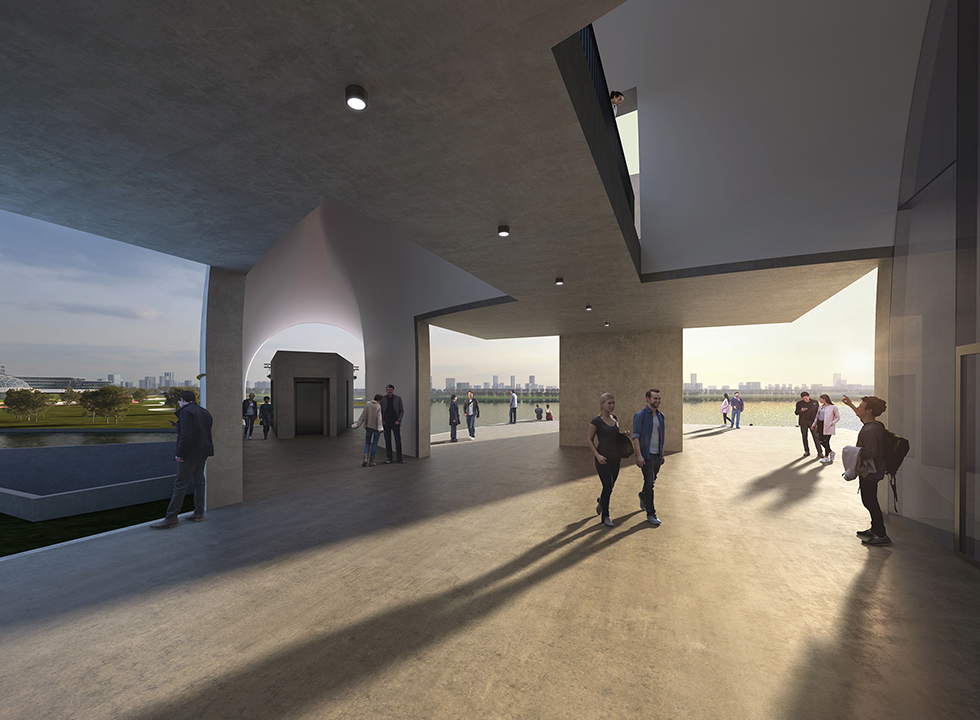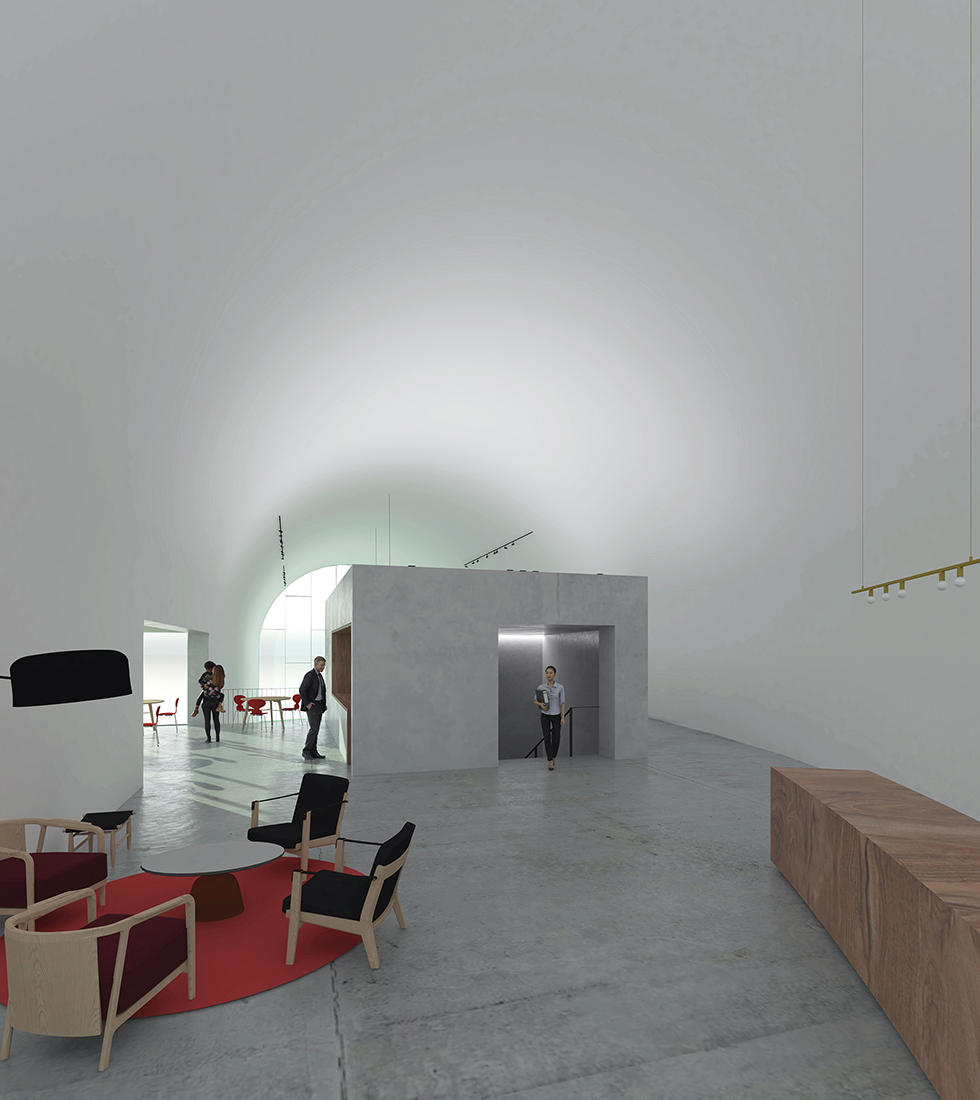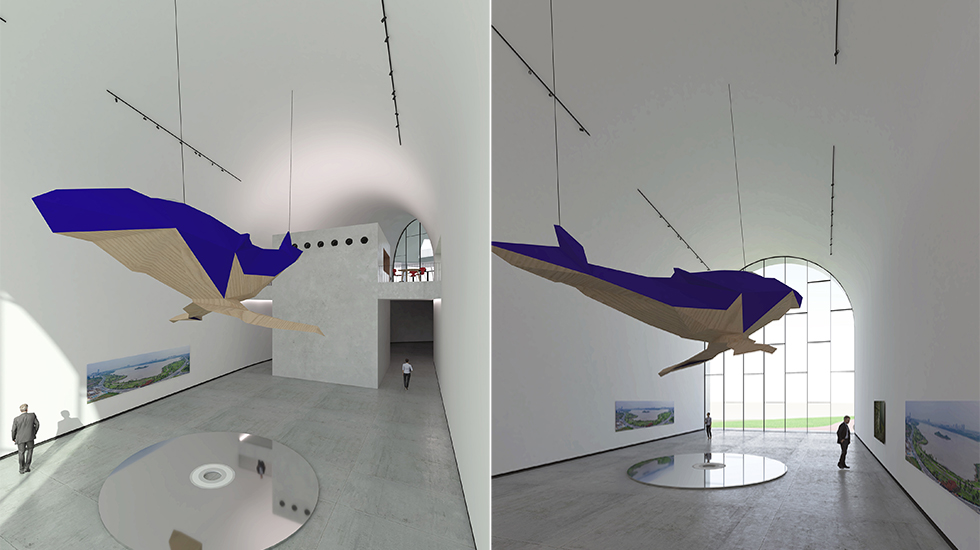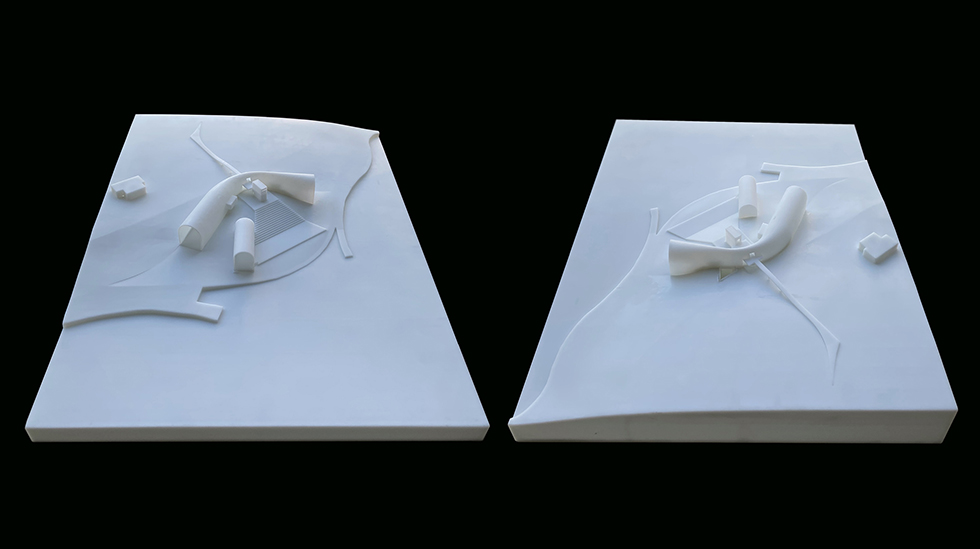| Chengdu Xinglong Lake Roadshow Center成都天府新区兴隆湖路演中心方案征集入围建筑师提案 |
成都天府新区兴隆湖路演中心方案征集入围建筑师提案
Xinglong Lake Roadshow Center Design Proposal of Shortlisted Architects,Chengdu,China
建筑面积(GFA):1,920sqm
2020,成都,中国
阶段:竞赛
项目位于成都天府新区兴隆湖东侧湖边,基地东南角便是规划面积约1000亩,总建筑面积约145万平方米,以独角兽企业孵化和培育为主要产业载体的全球首个独角兽岛。
方案设计亟待解决的首要问题是将场地内不同标高的道路进行连接,以便更有效的联系公众,使得路演中心的进入方式更加开放、出入更为自由,更好的与公园相融合;设计思考的核心问题是突出其作为公共建筑节点的必要共享和交流作用。设计概念基于外形和内部空间取名为U通道(U-TUBE),首先,设计意图让建筑成为连通使用者和环境、政府和自我的纽带;同时,作为公共建筑,也希望其是政府连通公众,服务、回馈社会的有效载体;其次,建筑适当的体量、外形和顺应地形的布置方式以及保持河岸绿植的连续,能使建筑富有张力,更好的融入周边场地环境,达到自然和谐的目的;第三,我们也鼓励展品和演绎将时间概念融入其中,以更有效的结合和突出隧形空间的特点。面对终端的全视野湖景,我们希望激发使用者的舒适感受和对美好未来的憧憬;设计意图从时间和空间概念上展现不同维度,全天候服务大众,实现展和演的有效互补,为访客带来多层次丰富的感官体验。最终,便捷出入带来的建筑亲和感,以及犹如隧道般穿越的现场体验感,经由内部通道最后印入眼帘的开阔湖景的柳暗花明式的欣喜和期待,希望能为访客带去自然而舒适的建筑体验。
建筑功能的反向定位和思考,我们尝试将1000平米的混合多用途功能中“展示”和“演绎”两部分分立出来,而非将所有功能置于一个大型空间进行灵活使用。这其中,也包含了为了获取一个更小的建筑体量,从而将建筑更好的融入周边环境的考量。分化设计使得方案的功能空间更加专业好用,建筑体量尺度更为宜人,同时也为建筑形式带来更多的可能性。
我们希望新建筑以其开放、连通的理念成为大众交流的平台,通过科技、时尚等宣传媒介进行推广,从而成为作为西部中心的成都连通全国乃至世界的象征。
The project is located on the east side of Xinglong Lake in Chengdu's Tianfu New District, and the world's first unicorn island is located in the southeast corner of the site, with a planned area of 66.7 ha and a total construction area of about 1.45 million m2, and will be the incubation and cultivation site of Unicorn enterprises.
The schematic design of this site initially focused on connecting roads at various levels, more effectively connecting the public to create open and free access to the roadshow center and emphasize its role of public communications as a public building. The design concept is named U-TUBE based on the shape and interior space. Firstly, the design goal is for the building to serve as a link between the user and the environment, government, and self. At the same time, as a public building, it will also serve as an effective means for the government to connect with and serve the public. Secondly, the appropriate size, shape topographical arrangements of the building, and the continuity of greenery along the riverbanks will give the building a natural and harmonious feel to blend smoothly with the surrounding environment. Thirdly, the exhibits and interpretations will be encouraged to use the concept of time to more effectively integrate and highlight the tunneled space. Facing the terminal's panoramic view of the lake, we also hope to inspire users with a sense of comfort and a vision of a better future. The design intent is to present the concept of “time and space” from different dimensions, to serve the public throughout the day and night, to achieve effective integration between exhibition and performance, and to bring visitors a rich multi-layered sensory experience. Finally, we hope to bring visitors a natural and comfortable architectural experience. The sense of architectural affinity brought by convenient access, the experience similar to tunneling, and the delight and expectation of the open lake view are finally imprinted onto the eye through the internal passageway.
As for the reverse positioning and thinking of the building functions, we tried to separate the “exhibition” and “performance” parts from the 1000 m2 mixed-use functions, instead of putting all functions into a large space for flexible use. This also includes obtaining a smaller building volume, to better integrate the building into the surrounding environment. The differentiated design makes the functional space of the scheme more professional and suitable for use, at a more pleasant building scale. Meanwhile, it also brings more possibilities for the architectural form.
We hope that the new building, with its openness and connectivity, will become a medium of communication and propaganda for the general public, technology, and fashion, as well as a symbol of Chengdu, a center of western China to connect with the country and the world.
